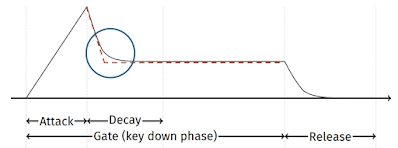Patch modes vs. live mode - when the controls don't show the current value

The problem is as old as the invention of patch storage: once you load a patch into the active synth parameters you run into a conflict with the panel controls. These become detached from the patch. Different solutions have been found over the years. Jupiter 4 : the brute force approach means that if you store a patch you can never change it again. Yes, really! When a patch is selected, the panel controls have no effect whatsoever. I am sure there is more than one person who was close to a heart attack thinking that their Jupiter 4 was totally broken when first experiencing this... One parameter select : with the entry of the DX7 the single parameter editing UI concept became popular where you select parameter to see its value in a display and then use a universal dial or slider to change it. A nuisance, of course, but solving a lot of problems for synth designers, one of many being that the values can always be updated from memory without conflict... Endless dials : a more modern app



